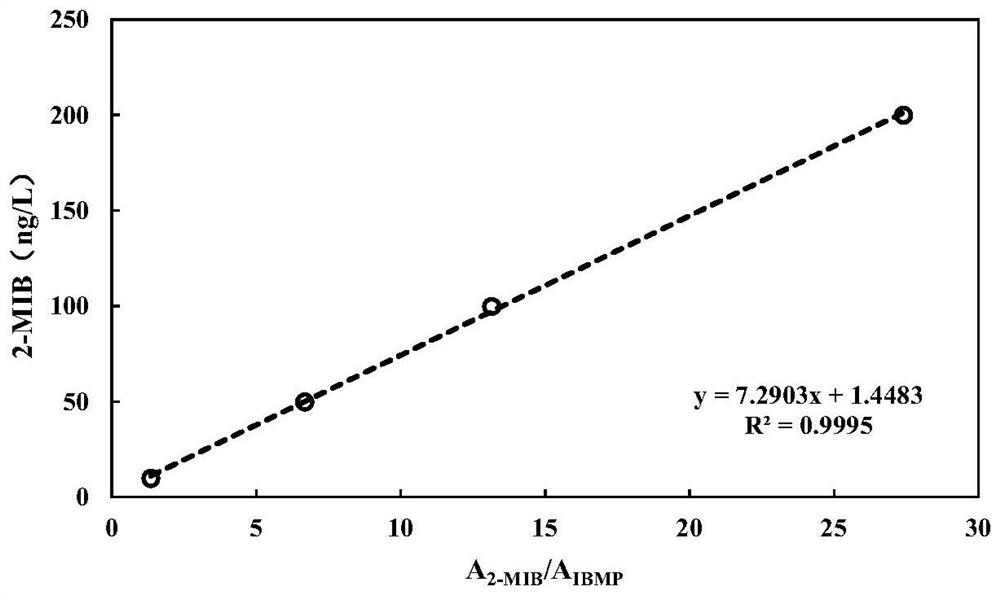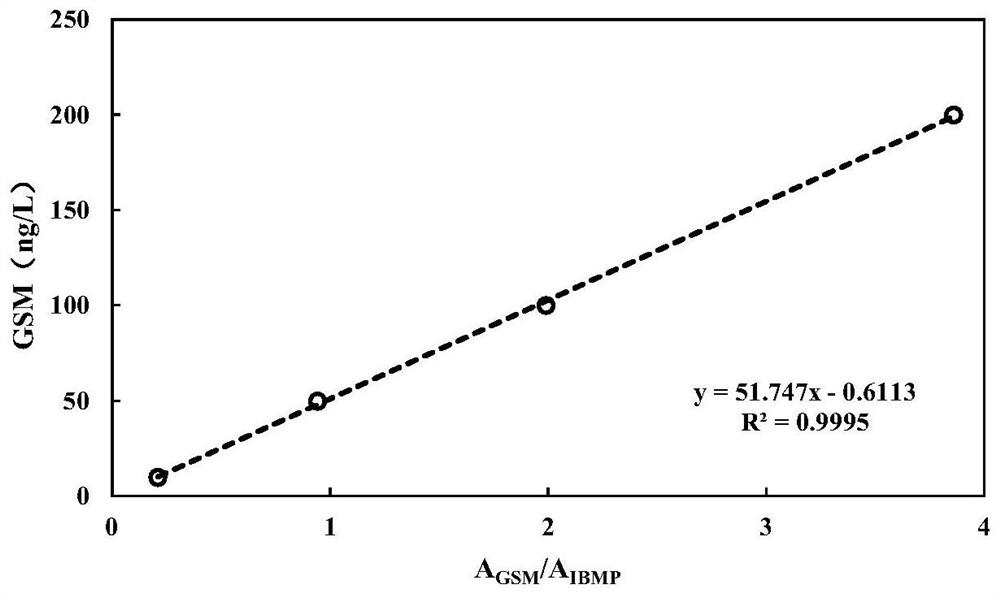Method for degrading odor substances in water based on disinfection technology
A technology of smelling and smelling substances and technology, which is applied in the field of degrading smelling and smelling substances in water based on disinfection technology, and can solve problems such as difficult to remove, difficult to degrade in strength, and low reactivity
- Summary
- Abstract
- Description
- Claims
- Application Information
AI Technical Summary
Problems solved by technology
Method used
Image
Examples
Embodiment 1
[0073] According to the optimal experimental conditions determined by the above pure water experiment, when the ultraviolet radiation intensity is 1.42×10 - 6 Einstein L -1 ·S -1 , chloramine concentration of 0.025mM, pH of 7 conditions, UV / NH 2 Cl advanced oxidation process on the removal of odor and smell substances in actual water sources. Use the Yangtze River water source to configure a 500ml mixed solution with a concentration of 100-150ng / L of smelling and smelling substances, and add the prepared smelling and smelling substance solution into the reactor equipped with an ultraviolet lamp tube, respectively, at time 0, 1, 2, At 5, 10, and 15 minutes, take 10ml of the sample and add it to the CTC special sample bottle that has been filled with 2.50gNaCl, then add 100μl of sodium thiosulfate with a concentration of 0.1M as a quencher, and 20μl of IBMP with a concentration of 10mg / L. The degradation experiment of smell and taste substances was carried out, and the degra...
Embodiment 2
[0078] In the ultraviolet radiation intensity is 1.42×10 -6 Einstein L -1 ·S -1 , chloramine concentration is 0.025mM, pH is 7 conditions, with Luanhe water (2-MIB exists in Luanhe water) after coagulation+sedimentation+filtering pilot plant treatment, the concentration of smell and taste substances is 100~150ng / L of 500ml mixed solution, other experimental methods were the same as in Example 1, and carried out the degradation experiment of odorant substances in Luanhe River water, and the degradation effect of odorant substances in the reaction time was shown in Table 3.
[0079] Table 3 Degradation effect of odor and smell substances in Luan River water within the reaction time
[0080] time (min) 2-MIB average degradation effect 0 0 1 9.56% 2 16.44% 5 44.36% 10 71.32% 15 81.64%
[0081] In this example, the combined use of ultraviolet and disinfectant (chloramine solution) degrades the effluent of Luan River water treated by...
PUM
 Login to View More
Login to View More Abstract
Description
Claims
Application Information
 Login to View More
Login to View More - R&D
- Intellectual Property
- Life Sciences
- Materials
- Tech Scout
- Unparalleled Data Quality
- Higher Quality Content
- 60% Fewer Hallucinations
Browse by: Latest US Patents, China's latest patents, Technical Efficacy Thesaurus, Application Domain, Technology Topic, Popular Technical Reports.
© 2025 PatSnap. All rights reserved.Legal|Privacy policy|Modern Slavery Act Transparency Statement|Sitemap|About US| Contact US: help@patsnap.com



